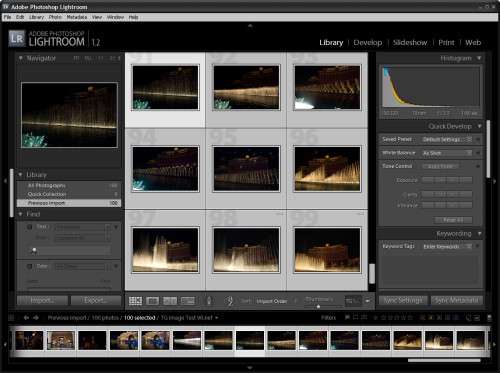- Qualcomm Launches Snapdragon 4 Gen 2 Mobile Platform
- AMD Launches Ryzen PRO 7000 Series Mobile & Desktop Platform
- Intel Launches Sleek Single-Slot Arc Pro A60 Workstation Graphics Card
- NVIDIA Announces Latest Ada Lovelace Additions: GeForce RTX 4060 Ti & RTX 4060
- Maxon Redshift With AMD Radeon GPU Rendering Support Now Available
Intel Skulltrail Enthusiast Platform Preview

Consisting of two Extreme Quad-Core processors, Intel is looking to redefine what we know as “high-end”. Skulltrail is touted as being the “ultimate” enthusiast platform, offering SLI and Crossfire support, huge overclocking abilities and enough sheer power to make the competition weep.
Page 9 – Multi-Media: Adobe Lightroom, 3DS Max 9
Adobe Lightroom 1.2
Years ago, you’d have to fork over many Benjamins in order to get a piece of great technology, but that’s not the case anymore. For a modest fee, you can set yourself up with some absolutely killer hardware. Luckily, one area where that’s definitely the case is with digital cameras. It’s cheaper than ever to own a Digital-SLR, which is the reason why they are growing in popularity so quickly. As a result, RAW photo editing is also becoming more popular, hence the topic of our next benchmark.
Adobe Lightroom is an excellent RAW photo editor/organizer that’s easy to use and looks fantastic. For our test, we take 100 RAW files (Nikon .NEF) which are 10 Megapixel in resolution and then export them as JPEGs in 1000×669 resolution… a result that could be easily passed around online or saved elsewhere on your machine as a low-resolution backup.

With normal Lightroom batch jobs, the dual CPUs won’t effect much, except for giving you a smoother multi-tasking machine while the application takes one CPU for itself.
3DS Max 9
As an industry-leading 3D graphics application, Autodesk’s 3DS Max is one of our more important benchmarks. If there are people who will benefit from faster CPUs with lots of cores, it’s designers of 3D models and environments and animators. Some of these projects are so comprehensive that they can take days to render. At this time, the application does not support SSE4 and will likely not in the future due to irrelevant instructions.
For our test, we are taking a dragon model which is included with the application, Dragon_Character_Rig.max, and rendering it to 1080p resolution (1920×1080). For a second test, we render the same model, but all 60 frames, to a 490×270 resolution .AVI.

In total, 3DS Max used only 6/8 cores, which was a 50% speed increase when compared to our single QX9770. Depending on the project at hand, these times will vary. Even though the application is designed to handle numerous cores, certain jobs may not require more than four, so the scores will differ. A 50% speed increase is still nothing to scoff at, though, and with larger projects, the differences would be even more appreciated.
Support our efforts! With ad revenue at an all-time low for written websites, we're relying more than ever on reader support to help us continue putting so much effort into this type of content. You can support us by becoming a Patron, or by using our Amazon shopping affiliate links listed through our articles. Thanks for your support!







